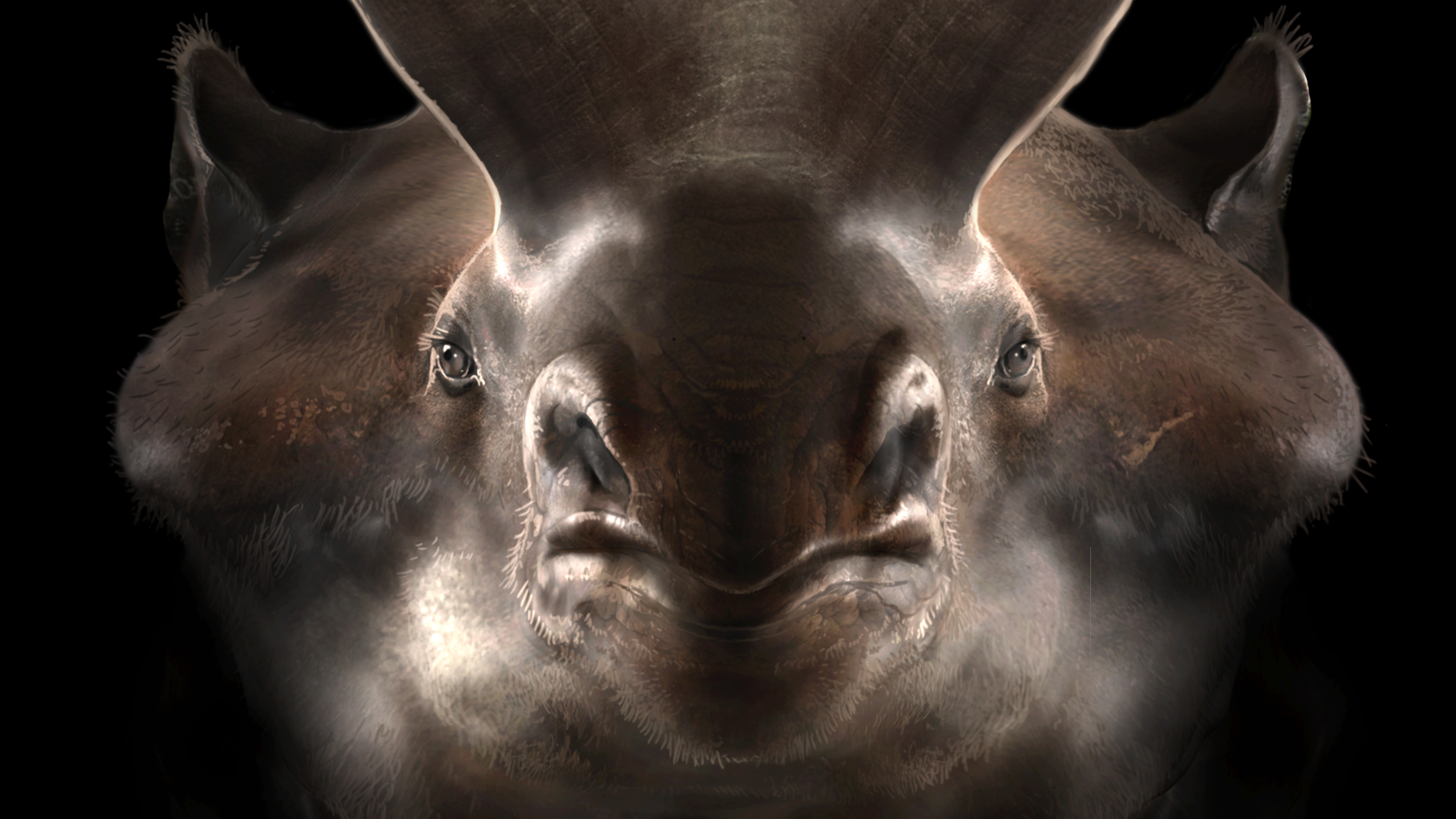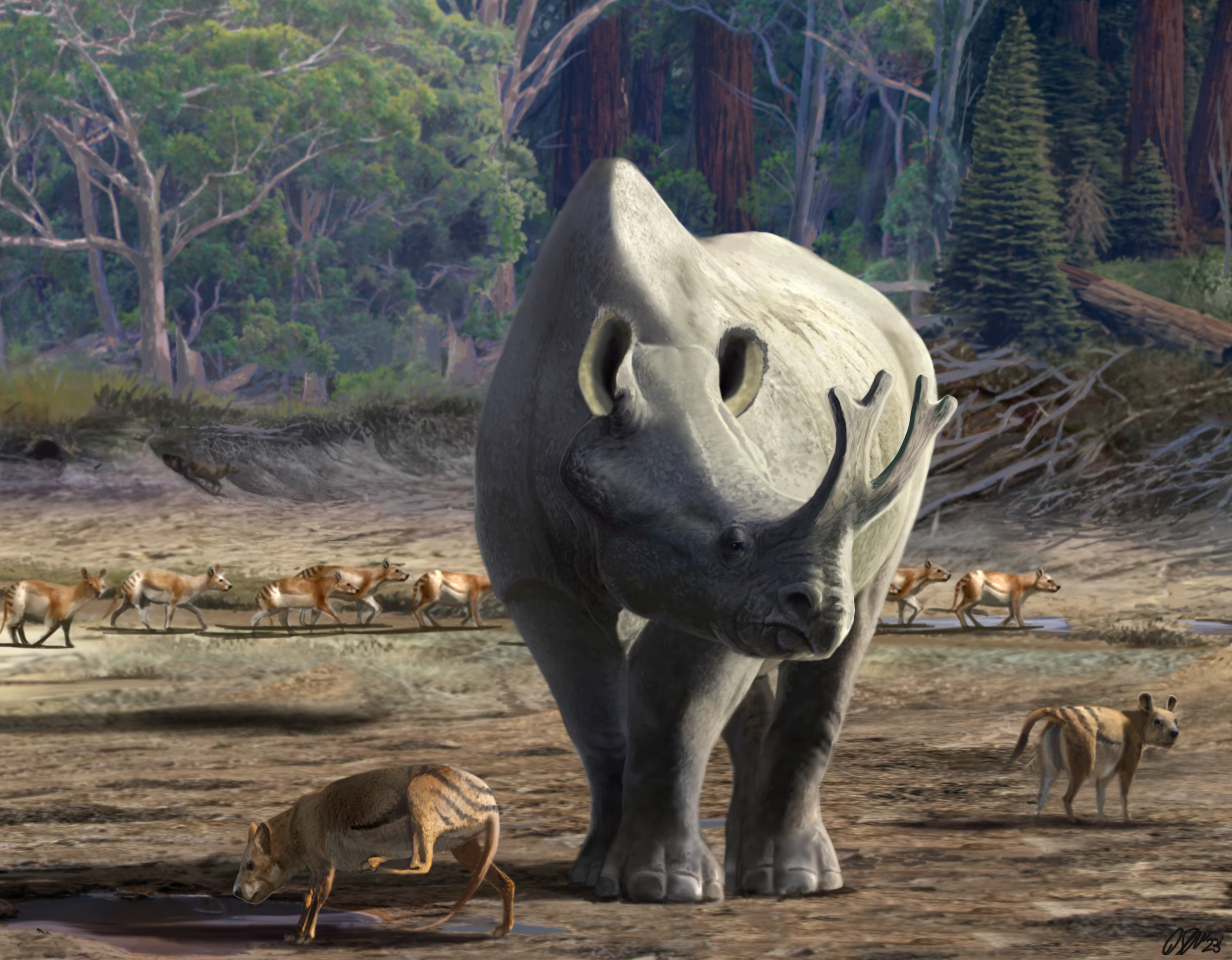Rhino-like 'thunder beasts' grew massive in the evolutionary blink of an eye after dinos died off
Ancient mammals known as 'thunder beasts' grew 1,000 times bigger just 16 million years after the dino-killing asteroid struck.

In the aftermath of the dinosaur-killing asteroid impact, a second explosion rocked the animal kingdom.
This time, it was the mammals that blew up. Rhino-like horse relatives that had lived in the shadow of the dinosaurs became gigantic "thunder beasts" as suddenly as an evolutionary lightning strike, new research, published Thursday (May 11) in the journal Science, shows.
The findings suggest that large body size may have provided at least some mammals with a distinct evolutionary edge after the dinosaurs died off.
During the Cretaceous period (145 million to 66 million years ago) , mammals mostly scurried at the feet of much larger dinosaurs. Many weighed no more than 22 pounds (10 kilograms). But when the dinosaurs went extinct, mammals seized a critical opportunity to make it big. Few did so as impressively as brontotheres, an extinct mammal lineage that started out at 40 pounds (18 kg) and is most closely related to modern horses.
"Even though other mammalian groups attained large sizes before [they did], brontotheres were the first animals to consistently reach large sizes," study first author Oscar Sanisidro, a researcher with the Global Change Ecology and Evolution Research Group at the University of Alcalá in Spain. "Not only that, they reached maximum weights of 4-5 tons [3.6 to 4.5 metric tons] in just 16 million years, a short period of time from a geological perspective."
Related: How big can animals get?
Brontotheres' fossils have been found in what is now North America, and they earned the "Thunder Beast" moniker from members of the Sioux nation, who believed the fossils came from giant "Thunder Horses," that would roam the plains during thunderstorms.
Sign up for the Live Science daily newsletter now
Get the world’s most fascinating discoveries delivered straight to your inbox.

Paleontologists previously knew that brontotheres swelled in size incredibly quickly. The problem is that, until now, they had no solid explanation for how.
There are three possible trajectories the group could have taken. One, known as Cope's rule, suggests that the entire group steadily increased in size over time, like riding an escalator from small to large. Another hypothesis suggests that instead of a steady increase over time, there were periods of rapid increase that would plateau periodically, like running up a flight of stairs but hanging out on the landings to catch your breath. The third explanation was that there was no consistent increase across all species; some would go up, and some would go down, but in general, more ended up large as opposed to small.
Sanisidro and colleagues analyzed a family tree containing 276 known brontothere individuals to pick the most likely scenario.
They found that the third explanation best fit the data: Instead of slowly getting bigger over time or swelling and plateauing, individual brontothere species would either increase or decrease in size as they expanded into new ecological niches.
Once a new species appeared in the fossil record, it didn't change much. However, larger species survived while smaller ones quickly became extinct, pushing up the average size of the group over time.
The most likely explanation for this, Sanisidro told Live Science, is competition. Because mammals at the time tended to be small, there was a ton of competition among smaller herbivores. Bigger ones had fewer competitors for the food sources they sought and therefore better outlooks for survival.
Bruce Lieberman, a paleontologist with the University of Kansas who was not affiliated with the study, told Live Science that he was impressed by the study's sophistication.
Sanisidro notes that this study only explains how rhino-like mammals may have become giants, but he hopes to test the validity of his model on other large mammal species in the future.
"Also, we would like to explore how changes in brontothere body size could have influenced other characteristics of these animals, like skull proportions, the presence of bony appendages," such as horns, Sanisidro said.

Cameron Duke is a contributing writer for Live Science who mainly covers life sciences. He also writes for New Scientist as well as MinuteEarth and Discovery's Curiosity Daily Podcast. He holds a master's degree in animal behavior from Western Carolina University and is an adjunct instructor at the University of Northern Colorado, teaching biology.










